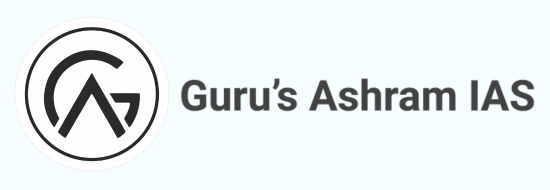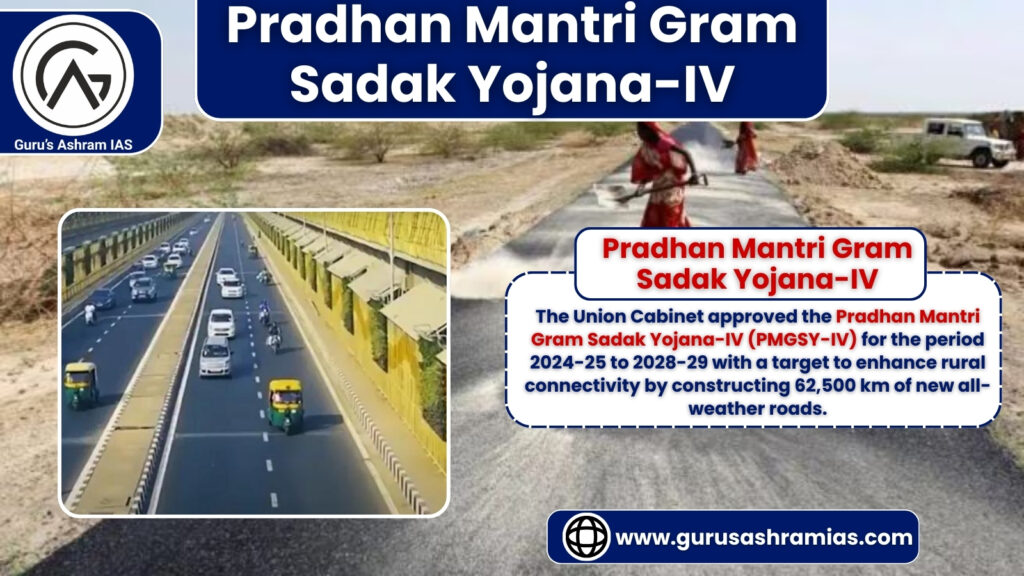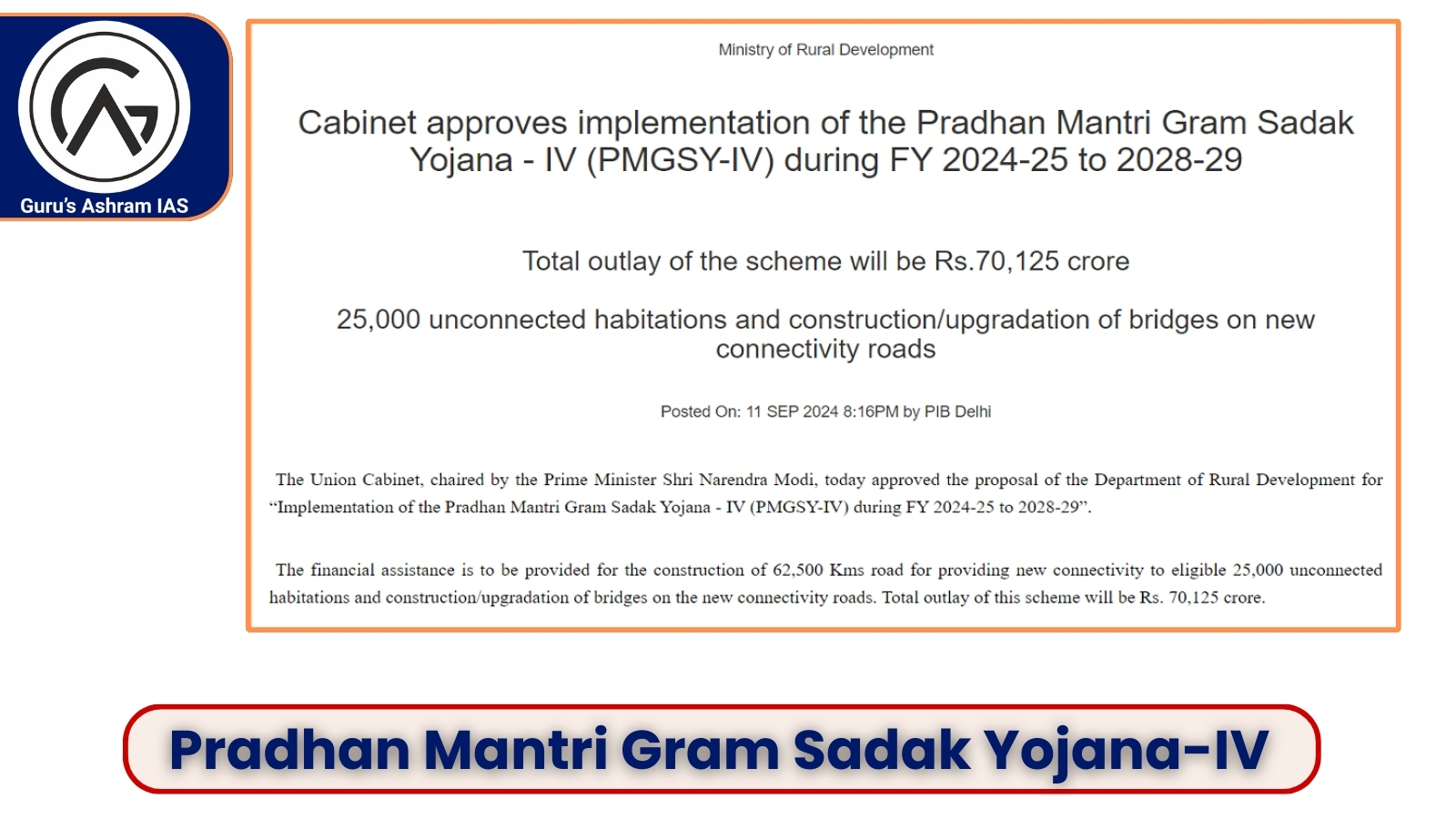Pradhan Mantri Gram Sadak Yojana-IV (PMGSY-IV)
- The Union Cabinet approved the Pradhan Mantri Gram Sadak Yojana-IV (PMGSY-IV) for the period 2024-25 to 2028-29 with a target to enhance rural connectivity by constructing 62,500 km of new all-weather roads.
Coverage:
- The initiative will connect 25,000 unconnected habitations with a population of more than 500 in plain areas, more than 250 in Northeastern and Hilly States and more than 100 in Left Wing Extremism (LWE) affected districts.
- It is expected that the new roads will boost socio-economic development in remote rural areas and improve access to education, health, markets and development centres. The scheme is designed to generate 40 crore person-days of employment.
- PMGSY is a central government scheme launched in the year 2000 to provide all-weather road connectivity to unconnected rural habitations.
- The scheme was originally a 100% centrally sponsored initiative, but from the financial year 2015-16, its funding began to be shared in the ratio of 60:40 between the central and state governments.
- Under various phases of PMGSY, about 8,00,000 km of rural roads have been constructed and 1,80,000 habitations have been connected.
Pradhan Mantri Gram Sadak Yojana (PMGSY):
- Pradhan Mantri Gram Sadak Yojana (PMGSY) was launched on 25th December 2000 to provide all weather road connectivity to unconnected habitations.
Eligibility:
- Unincorporated habitations of specified population size (500 + in plain areas and 250 + in Northeastern States, Himalayan States, Desert and Tribal areas as per 2001 Census) in the core network to improve the socio-economic status of the rural population.
- An unconnected settlement is one whose population of the prescribed size is located at a distance of at least 500 m or more (1.5 km path distance in case of hills) from a perennial road.
Core Network:
- It is the minimum network of roads required to provide basic access to essential social and economic services to all eligible habitations in selected areas through at least single all-weather road connectivity.
Financing Pattern:
- In respect of projects sanctioned under the scheme in North-Eastern and Himalayan States, the Central Government bears 90% of the project cost while for other States, the Central Government bears 60% of the cost.
Construction Standards:
- Rural roads constructed under PMGSY will be as per the provision of Indian Roads Congress (IRC), which has been the apex body of highway engineers since the year 1934.
PMGSY-Phase-I:
- PMGSY-Phase-I was launched in the year 2000 as a 100% centrally sponsored scheme.
- Under the scheme, a target was set to provide road connectivity to 1,35,436 habitations and upgradation of 3.68 lakh km of existing rural roads to ensure complete farm-to-market connectivity.
PMGSY-Phase-II:
- Subsequently, Government of India launched PMGSY-II in 2013 for upgradation of 50,000 km of existing rural road network to improve its overall efficiency.
- While the ongoing PMGSY-I continued, under PMGSY Phase-II, roads already constructed for village connectivity were to be upgraded to augment rural infrastructure.
- The cost was shared between the Centre and the States / UTs.
- The Road Connectivity Project for Left Wing Extremism Affected Areas (RCPL WEA) was launched in 2016 for construction of rural roads in LWE affected areas.
PMGSY – Phase-III:
- Phase-III was approved by the Cabinet during July 2019.
It prioritizes features, such as:
- Rural Agricultural Markets (GRAMs): Grams are retail agricultural markets near farm gates that promote and serve more efficient transactions of farmers’ produce.
Higher Secondary School and Hospital.
- Under the PMGSY-III scheme, it is proposed to consolidate 1,25,000 km of road length across states. The duration of the scheme is from 2019-20 to 2024-25.
Progress of the scheme:
- Out of 8.25 lakh km sanctioned, more than 7 lakh km roads have already been completed with an investment of Rs. 2,70,000 crores. Additionally, a total of 1,61,561 unconnected habitations have been provided perennial road connectivity under PMGSY.





